The Pope’s Christmas greetings included, as in previous years, some criticism; Francis was cool in the previous week’s Mass with the curial cardinals as well.
By Sandro Magister
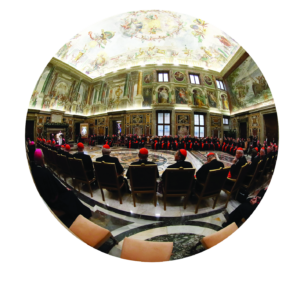
December 21, 2019, in the Vatican Clementine Hall. Pope Francis met with the Roman Curia to exchange Christmas greetings
Once again, in the speech he gives every year to the Vatican Curia before Christmas, Pope Francis has come out swinging at his unfortunate listeners.
Last year he went after the Judases “who hide behind good intentions to stab their brothers and sow weeds.”
Two years ago he had pilloried the “trusted traitors” who “let themselves be corrupted by ambition or vainglory and, when they are gently removed, falsely declare themselves martyrs of the system, of the ‘uninformed Pope,’ of the ‘old guard,’ … instead of reciting the ‘mea culpa.’”
And who is in the Pope’s crosshairs this year? Once again, the speech given by the Pope to the Roman Curia on the morning of Saturday, December 21 contained some biting passages, aimed at the fear of change, at “rigidity,” at merely “occupying spaces where power is exercised.”
First, however, comes the news of another meeting that took place a few days ago between Francis and the cardinals — a meeting that started badly and ended even worse.
No Vatican news organization has so far mentioned this meeting. And yet it happened. It took place in the Vatican chapel of Santa Marta on the morning of Friday, December 13, the fiftieth anniversary of the first Mass of Jorge Mario Bergoglio.
The one who had suggested to Pope Francis that he celebrate this occasion with a Mass together with the cardinals residing in Rome had been, a few weeks earlier, Cardinal Angelo Sodano, in his capacity as Dean of the College of Cardinals.
Francis had replied “no.” But Sodano had not given up, and thanks to a second effort by college sub-dean Cardinal Giovanni Battista Re, he was finally able to overcome his resistance.
In sending to the cardinals the letter of invitation for the gathering, Sodano made mention of Francis’ initial resistance… who, however, only slightly attenuated his impulse of distaste. On December 13 the Mass took place, but in the most absolute silence on both sides. The Pope did not deliver the homily and did not say a single word either before or after the ceremony. And even Sodano was unable to read the address of good wishes he had prepared, in the name not only of those present but of the entire College of Cardinals. After the Mass, Francis quickly greeted the cardinals one by one and left.
In the afternoon, both L’Osservatore Romano and Vatican News published the message of good wishes from Cardinal Sodano — but without covering the news or providing a single image of the Mass celebrated with the Pope.
This, in fact, was the strict order of the Pontiff: no news and no photos.
Needless to say, the cardinals who had come to Santa Marta were very much struck by the Pope’s coldness towards them. A coldness of which they did not understand the reason. And this brings us to the pre-Christmas address to the curia on December 21, with the backstory just given.
Below appears the excerpted text of the speech, which was followed on the same day by a papal motu proprio that gave news of Cardinal Sodano’s resignation from the position of Dean of the College of Cardinals.
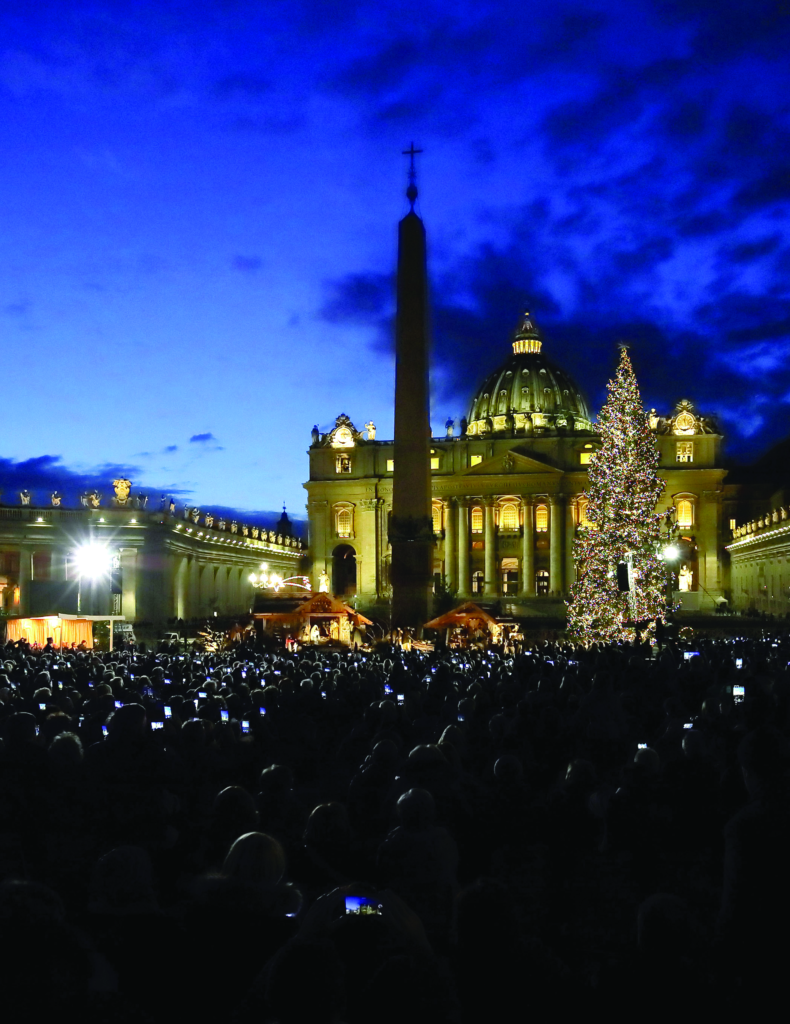
December 5, 2019, St. Peter’s Square. Inauguration of the full-scale colored wood nativity scene, from Scurelle (in the province of Trent, in northern Italy), and of the Christmas tree, a spruce from the Asiago plateau (province of Vicenza). This is a tribute to the areas hit by harsh storms in 2018.
Pope Francis’ Christmas Address to the Roman Curia (Excerpts)
-By Pope Francis, December 21, 2019
 Once again this year, the Lord gives us the opportunity to gather for this moment of fellowship which strengthens our fraternity and is grounded in our contemplation of God’s love revealed at Christmas. A contemporary mystic has written that “the birth of Christ is the greatest and most eloquent witness of how much God loved man. He loved him with a personal love. That is why he took a human body, united it to himself, and made it his own forever. The birth of Christ is itself a ‘covenant of love,’ sealed for all time between God and man.” As Saint Clement of Alexandria writes, “Christ came down and assumed our humanity, willingly sharing in our human sufferings, for this reason: so that, having experienced the frailty of those whom he loves, he could then make us experience his great power.”
Once again this year, the Lord gives us the opportunity to gather for this moment of fellowship which strengthens our fraternity and is grounded in our contemplation of God’s love revealed at Christmas. A contemporary mystic has written that “the birth of Christ is the greatest and most eloquent witness of how much God loved man. He loved him with a personal love. That is why he took a human body, united it to himself, and made it his own forever. The birth of Christ is itself a ‘covenant of love,’ sealed for all time between God and man.” As Saint Clement of Alexandria writes, “Christ came down and assumed our humanity, willingly sharing in our human sufferings, for this reason: so that, having experienced the frailty of those whom he loves, he could then make us experience his great power.”
In the light of this boundless benevolence and love, our exchange of Christmas greetings is yet another chance to respond to Christ’s new commandment: “Even as I have loved you, you must also love one another. By this all men will know that you are my disciples, if you have love for one another” (Jn 13:34-35). Jesus does not ask us to love him in response to his love for us; rather, he asks us to love one another as he does. In other words, he asks us to become like him, since he became like us. As Saint John Henry Newman prayed: “May each Christmas, as it comes, find us more and more like Him, who at this time became a little child for our sake, more simple-minded, more humble, more holy, more affectionate, more resigned, more happy, more full of God.” And he went on to say: “[Christmas] is a time for innocence, and purity, and gentleness, and mildness, and contentment, and peace.”
This mention of Newman brings to mind his well-known words in his Essay on the Development of Christian Doctrine, a book that coincided chronologically and spiritually with his entry into the Catholic Church: “Here below to live is to change, and to be perfect is to have changed often.” Naturally, he is not speaking about changing for change’s sake, or following every new fashion, but rather about the conviction that development and growth are a normal part of human life, even as believers we know that God remains the unchanging center of all things.
For Newman change was conversion, in other words, interior transformation. Christian life is a journey, a pilgrimage. The history of the Bible is a journey, marked by constantly new beginnings. So it was with Abraham. So it was too with those Galileans who two thousand years ago set out to follow Jesus: “When they had brought their boats to land, they left everything and followed him” (Lk 5:11). From that time forward, the history of God’s people — the history of the Church — has always been marked by new beginnings, displacements, and changes. This journey, of course, is not just geographical, but above all symbolic: it is a summons to discover the movement of the heart, which, paradoxically, has to set out in order to remain, to change in order to be faithful.
All of this has particular importance for our time, because what we are experiencing is not simply an epoch of changes, but an epochal change. We find ourselves living at a time when change is no longer linear, but epochal. It entails decisions that rapidly transform our ways of living, of relating to one another, of communicating and thinking, of how different generations relate to one another and how we understand and experience faith and science. Often we approach change as if were a matter of simply putting on new clothes, but remaining exactly as we were before. I think of the enigmatic expression found in a famous Italian novel: “If we want everything to stay the same, then everything has to change” (The Leopard by Giuseppe Tomasi di Lampedusa).
The more healthy approach is to let oneself be challenged by the questions of the day and to approach them with the virtues of discernment, parrhesía, and hypomoné. Seen in this light, change takes on a very different aspect: from something marginal, incidental, or merely external, it would become something more human and more Christian. Change would still take place, but beginning with man as its center: an anthropological conversion.
We need to initiate processes and not just occupy spaces: “God manifests himself in historical revelation, in history. Time initiates processes and space crystallizes them. God is in history, in the processes. We must not focus on occupying the spaces where power is exercised, but rather on starting long-run historical processes. We must initiate processes rather than occupy spaces. God manifests himself in time and is present in the processes of history. This gives priority to actions that give birth to new historical dynamics. And it requires patience, waiting.” In this sense, we are urged to read the signs of the times with the eyes of faith, so that the direction of this change should “raise new and old questions which it is right that we should face.”
Pope apologizes for hand slap
A woman grabbed Pope Francis’ hand and pulled him toward her; he scowled, then slapped her hand away
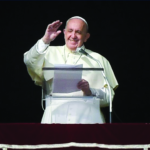 Pope Francis began the New Year with an apology for losing his temper the night before (December 31) with a woman who grabbed his hand and tried to pull him closer while he was greeting people in St. Peter’s Square. The Vatican’s official news service wrote: “As he greeted the faithful, a woman tugged his arm, causing a shooting pain to which the Pope reacted with an impatient gesture to free himself from her grip.” To get away, the Pope slapped her hand and gave her a serious scowl. A video of the
Pope Francis began the New Year with an apology for losing his temper the night before (December 31) with a woman who grabbed his hand and tried to pull him closer while he was greeting people in St. Peter’s Square. The Vatican’s official news service wrote: “As he greeted the faithful, a woman tugged his arm, causing a shooting pain to which the Pope reacted with an impatient gesture to free himself from her grip.” To get away, the Pope slapped her hand and gave her a serious scowl. A video of the 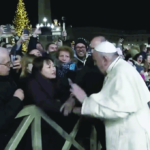 incident went viral on Twitter. Reciting the midday Angelus prayer January 1, Pope Francis was talking about how God’s offer of salvation in Jesus is “not magic, but patient, that is, it involves the patience of love, which takes on inequity and destroys its power.”
incident went viral on Twitter. Reciting the midday Angelus prayer January 1, Pope Francis was talking about how God’s offer of salvation in Jesus is “not magic, but patient, that is, it involves the patience of love, which takes on inequity and destroys its power.”
Then, briefly departing from his prepared text, the Pope said: “Love makes us patient. We often lose our patience; me, too, and I apologize for my bad example last night.”
—Cindy Wooden (CNS)
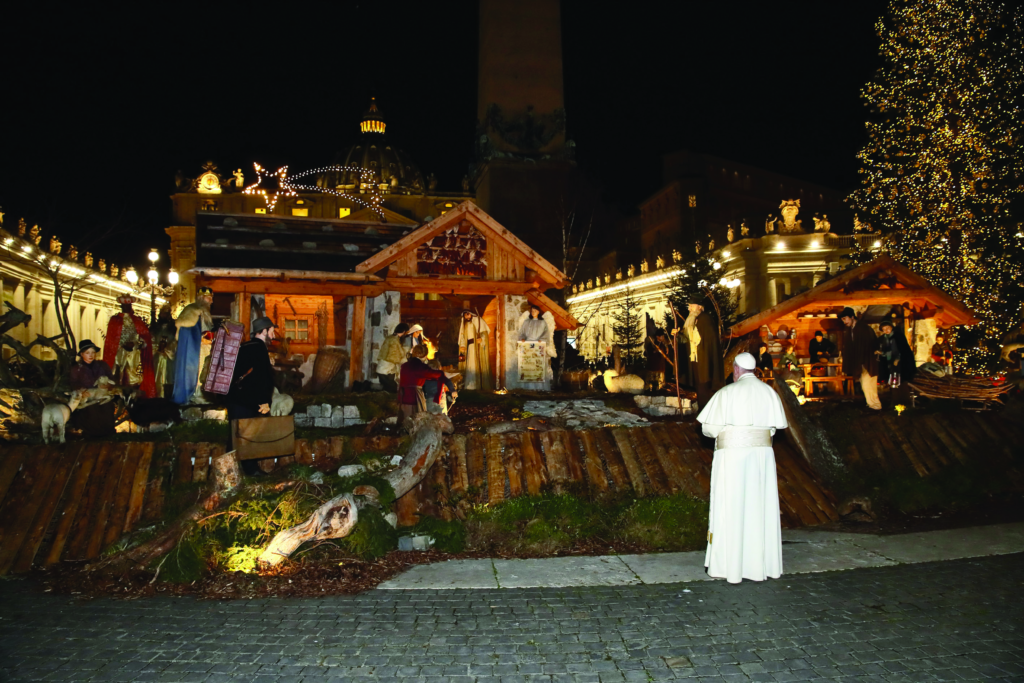

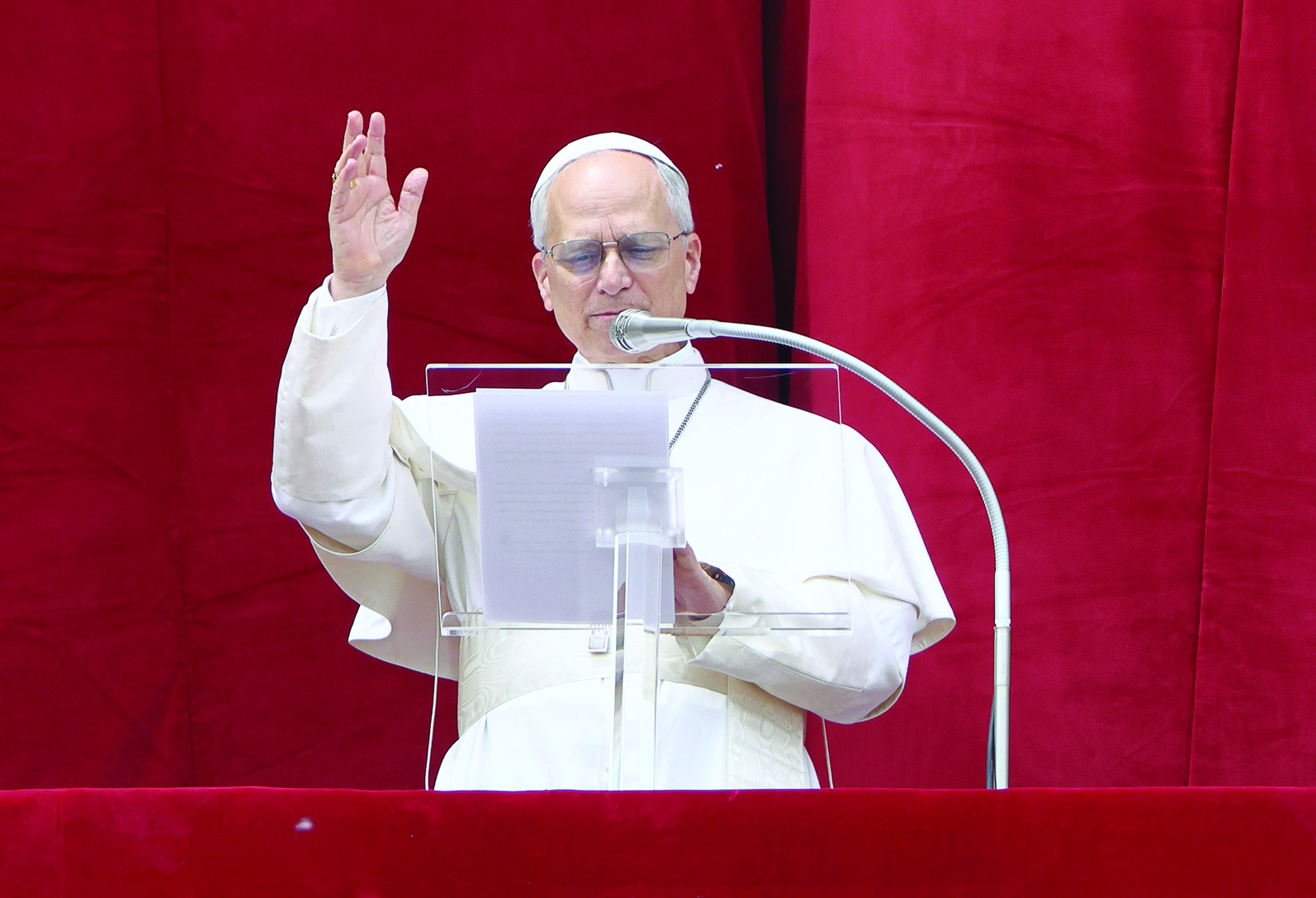

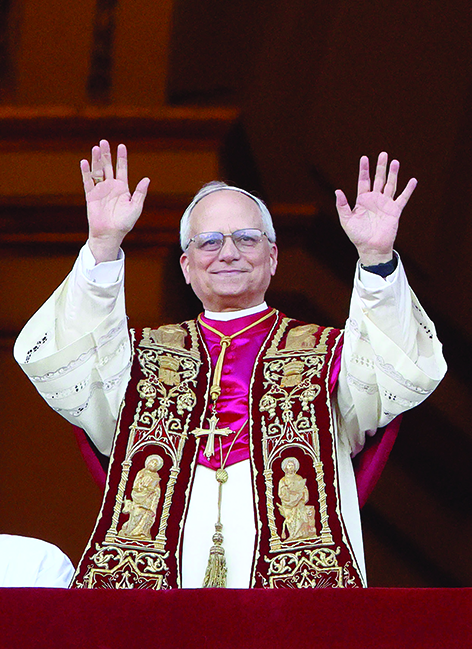
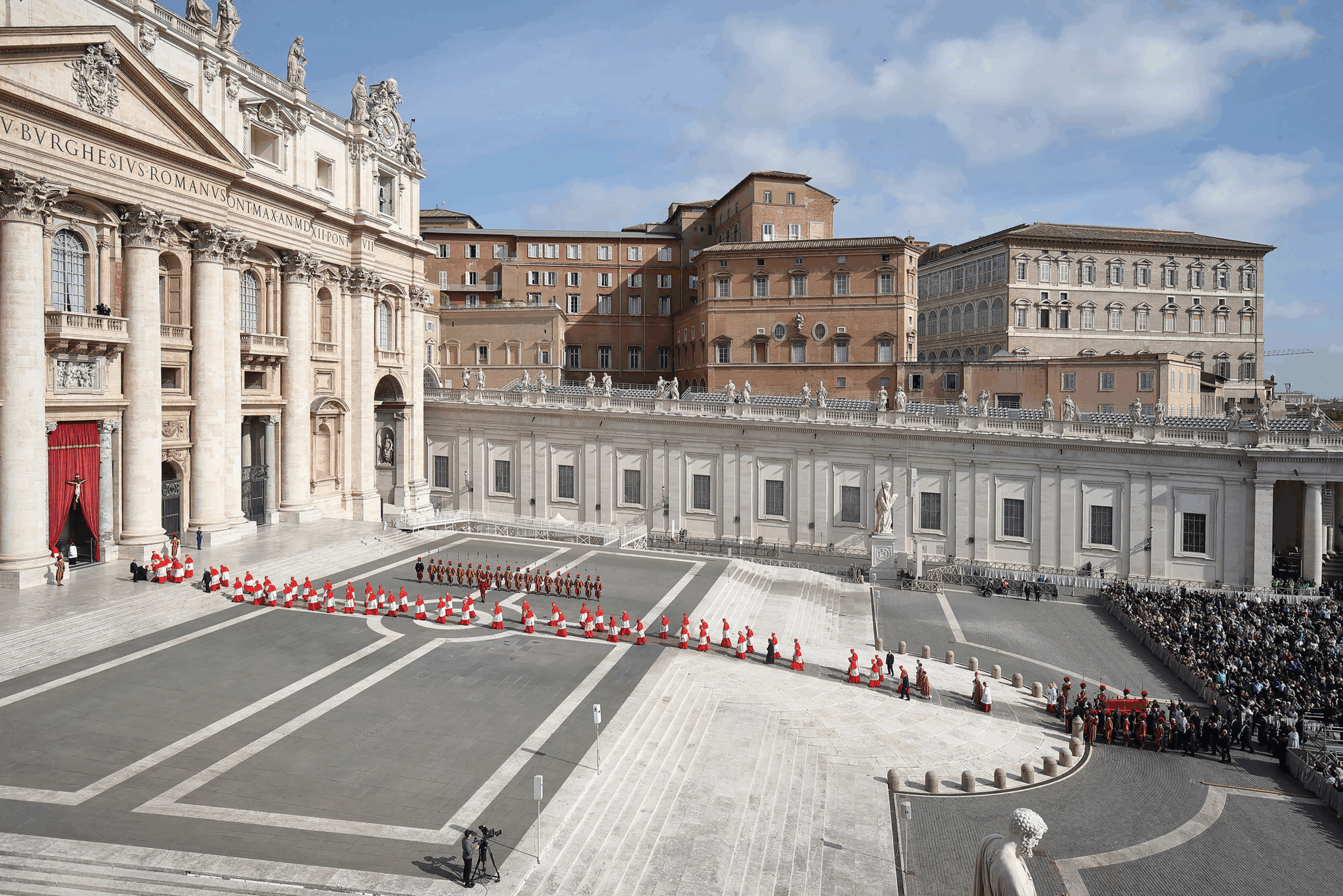
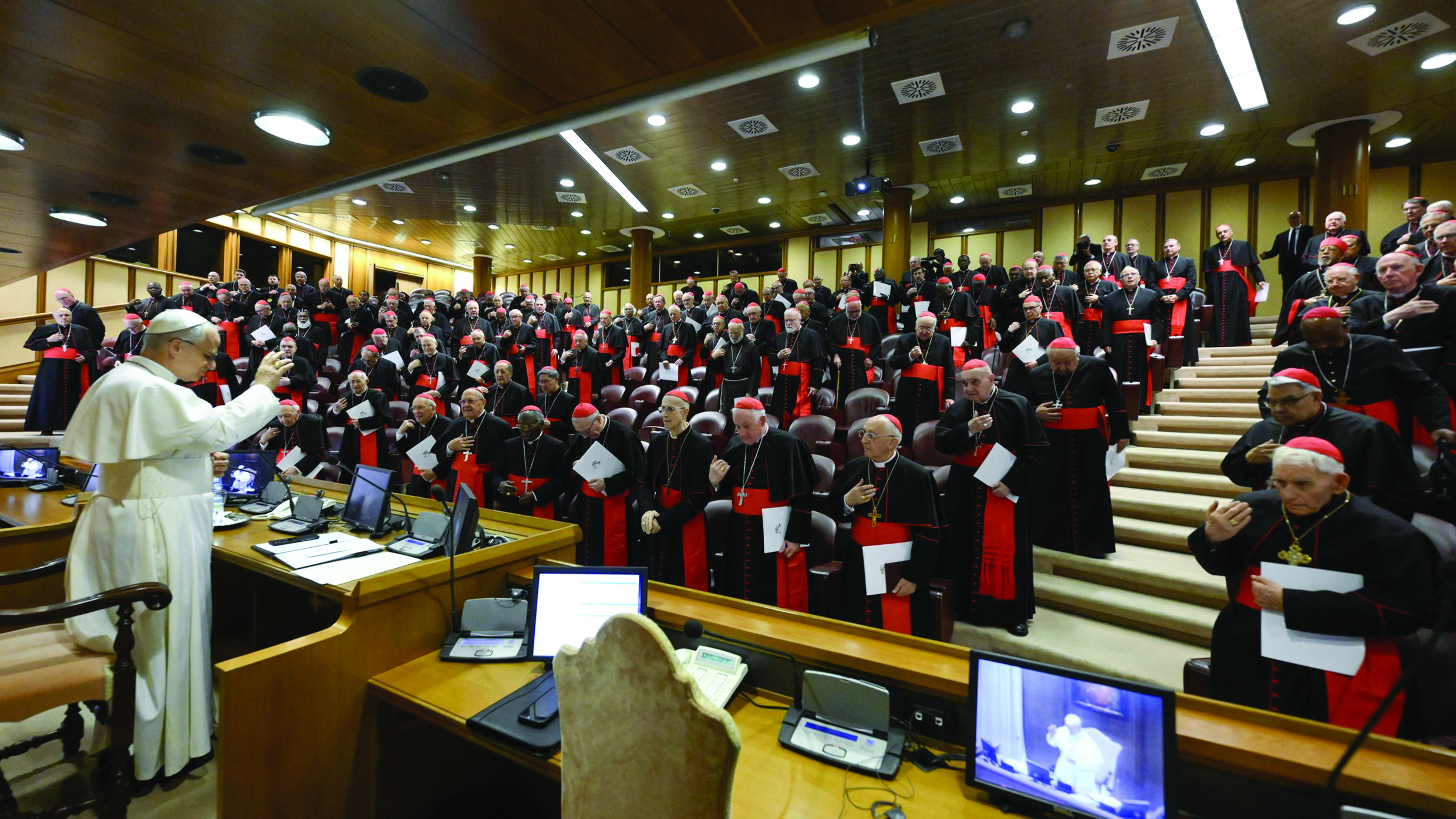
Facebook Comments